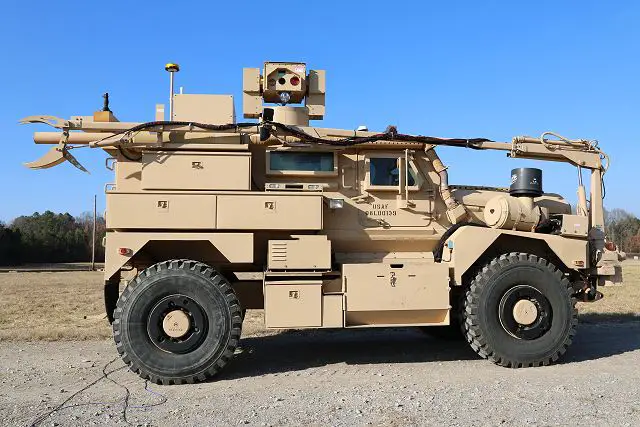U.S. Army and Air Force to develop RADBO laser mounted on MRAP vehicle for mine clearance 12706151
|
|
|||
|
Military Defense Industry Technology - Laser MRAP vehicle
|
|||
|
|
|||
| U.S. Army and Air Force to develop RADBO laser mounted on MRAP vehicle for mine clearance. | |||
|
The U.S. Army is working with the U.S. Air Force (USAF) to develop laser technology-equipped mine-resistant, ambush-protected (MRAP) vehicles. The vehicles would be able to safely explode mines and other explosives from a distance.
|
|||
|
|
|||
 The RADBO platform integrates a three-kilowatt Zeus III laser and robotic arm on a fielded mine-resistant ambush protected, or MRAP, vehicle, to more safely detonate unexploded ordnance from runways and taxiways. |
|||
|
|
|||
|
RADBO has the ability for immediate range clearance, enabling fighter pilots to use the range soon after the completion of a live-ordnance drop training exercise, saving lives on the battlefield.
The Air Force Civil Engineer Center, in partnership with Air Combat Command, the Prototype Integration Facility and the Redstone Test Center at Redstone Arsenal in Huntsville, Alabama, is participating in testing the Recovery of Airbases Denied by Ordnance, or RADBO, system. The system was developed as a candidate solution to meet an Air Force Central Command requirement for a stand-off unexploded ordnance neutralization and removal capability. The proposed RADBO solution integrates a three-kilowatt Zeus III laser and robotic arm on a fielded mine-resistant ambush protected, or MRAP, vehicle. EOD forces can use the laser and robotic arm from the safety of the MRAP to rapidly clear multiple unexploded ordnance from AFCENT airfields, which is part of the Air Force civil engineer airfield damage repair mission. The platform is a proposed improvement on the current "one man, one bomb" technique of unexploded explosive ordnance, or UXO, removal, which requires three-person teams of EOD technicians to conduct operations in close proximity to anti-access and area denial UXO hazards on runways and airfield surfaces. Developmental assessment of the RADBO system will take approximately six months. Laser ordnance testing is conducted at the beginning to establish baseline measurements. RTC will then conduct environmental tests to evaluate the system's performance in adverse conditions, including rain, wind, heat and even under electromagnetic radiation. A final round of laser ordnance testing will then check results against the original baseline. |
|||


























